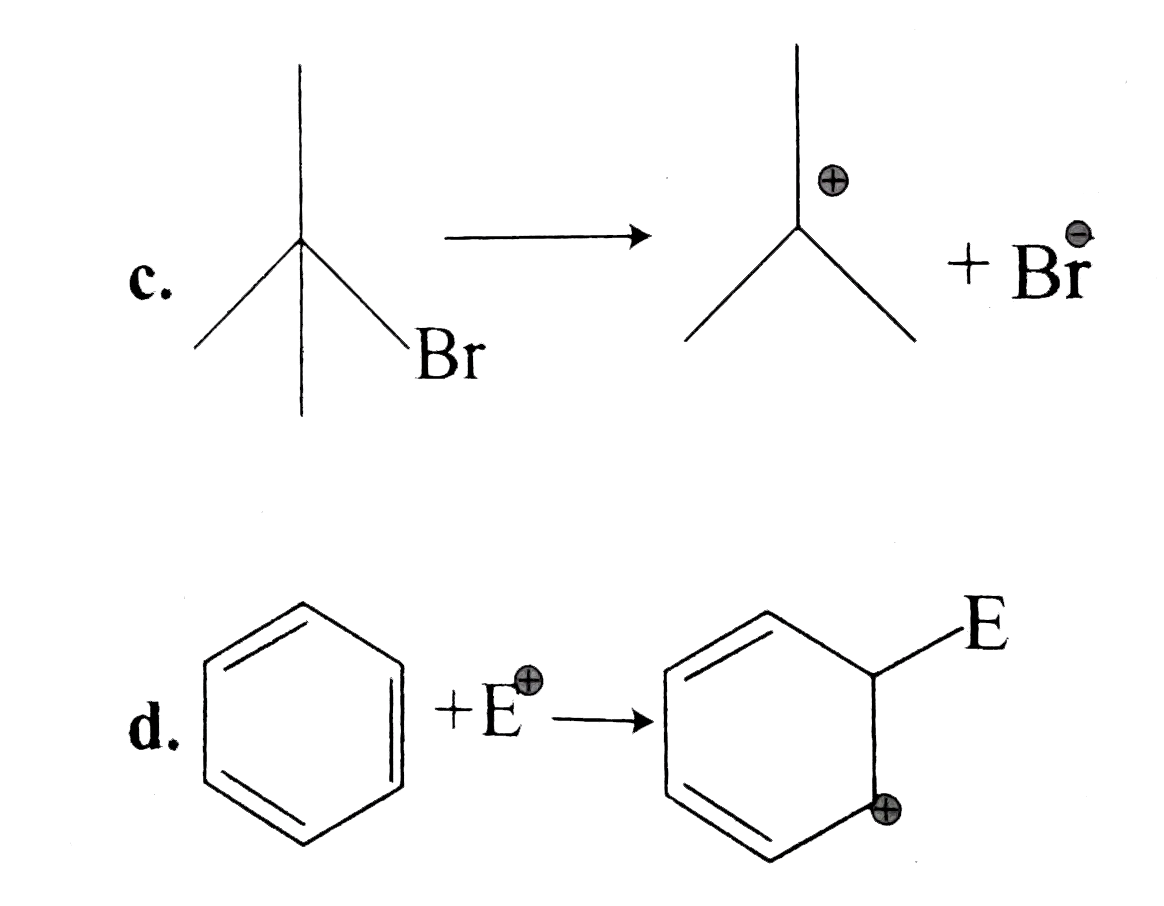For the following bond cleavages, use curved arrows to show the electron flow and classify each as homolysis or heterolysis. Identify the reactive intermediates produced in >C=O+ˆOH→C=O+H2OSolution in Malayalam
Step by step video & image solution for For the following bond cleavages, use curved arrows to show the electron flow and classify each as homolysis or heterolysis. Identify the reactive intermediates produced in gtC=O+hatOH rarr C=O+H_2O by Chemistry experts to help you in doubts & scoring excellent marks in Class 11 exams.
Topper's Solved these Questions
Similar Questions
Justify the position of hydrogen in the periodic table
05:22View SolutionDetermine the oxidation number of the underlilned element in the following:
KMn––––O4View SolutionFor the following bond cleavages, use curved-arrow to show the electron flow and classify each as homolysis or heterolysis. Identify intermediate products as free radical, carbocation, and carbanion. (a) CH_3O - OCH_3 rarr CH_3 dot O+ dot O CH_3 .
03:17View SolutionClassify each of the following as homolysis as homolysis or heterolysis. Identify the reaction intermediates produced , as free radical, carbocation and carbanion.
04:15View SolutionFor the following bond cleavages, use curved arrows to show the electron flow and classify each as homolysis or heterolysis. Identify reactive intermediate produced during the fission.
View Solutionनिम्नलिखित आबन्ध विदलनों के लिए इलेक्ट्रॉन - विस्थापन को मुड़े तीरों दर्शाइए तथा प्रत्येक विदलन को समांश अथवा विशमांश में वर्गीकृत कीजिए। साथ ही निर्मित सक्रिय मध्यवर्ती उत्पादों में मुक्त-मूलक, कार्बधनायन तथा कार्बऋणायन पहचानिए :
 View Solution
View SolutionShow the heterolysis of covalent bond by using curved arrow notation and complete the following equations. Identify the nucleophile is each case.
CH3−Br+KOH→01:33View SolutionShow the heterolysis of covalent bond by using curved arrow notation and complete the following equations. Identify the nucleophile is each case.
CH3−OCH3+HI→02:52View SolutionFor the given bond cleavages, use curved - arrows to show the electron flow and classify each as homolysis or heterolysis. Identify reactive intermediate produced as free radical, carbocation and carbanion. CH_(3)O-OCH_(3)rarrCH_(3)overset(*)(O)+overset(*)(O)CH_(3)
04:49View SolutionFor the following bond cleavages, use curved-arrows to show the electron flow and classify each as homolysis or heterolysis. Identify reactive intermediate produced as free radical, carbocation and carbanion. (a) CH_(3)O-OCH_(3)rarrCH_(3)overset(.)O+overset(.)(O)CH_(3) (b)
View SolutionFor the following bond cleavages, use curved-arrow to show the electron flow and classify each as homolysis or heterolysis. Identify intermediate products as free radical, carbocation, and carbanion.
(a) CH3O−OCH3→CH3.O+.OCH3
 .View Solution
.View SolutionFor the following bond cleavages, use curved arrows to show the electron flow and classify each as homolysis or heterolysis. Identify reactive intermediate produced as free radical, carbocation and carbanion (a) CH_(3)O- OCH_(3) rarr CH_(3) overset(.)(O) + overset(.)(O)CH_(3)
02:28View SolutionFor the following bond cleavages, use curved arrows to show the electron flow and classify each as homolysis or heterolysis. Identify reactive intermediate produced as free radical, carbocation and carbanion
(a) CH3O−OCH3→CH3.O+.OCH3
 03:04View Solution
03:04View SolutionFor the following bond cleavages, use curved arrows to show the electron flow and classify each as homolysis or heterolysis. Identify the reactive intermediates produced in CH_3-O-O-CH_3 rarr CH_3-O+CH_3O
04:40View SolutionFor the following bond cleavages, use curved arrows to show the electron flow and classify each as homolysis or heterolysis. Identify the reactive intermediates produced in gtC=O+hatOH rarr C=O+H_2O
01:18View SolutionFor the following bond cleavages, use curved-arrows to show the electron flow and classify each as homolysis or heterolysis. Identify reactive intermediate produced as free radical, carbocation and carbanion.
 02:21View Solution
02:21View Solution

